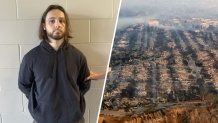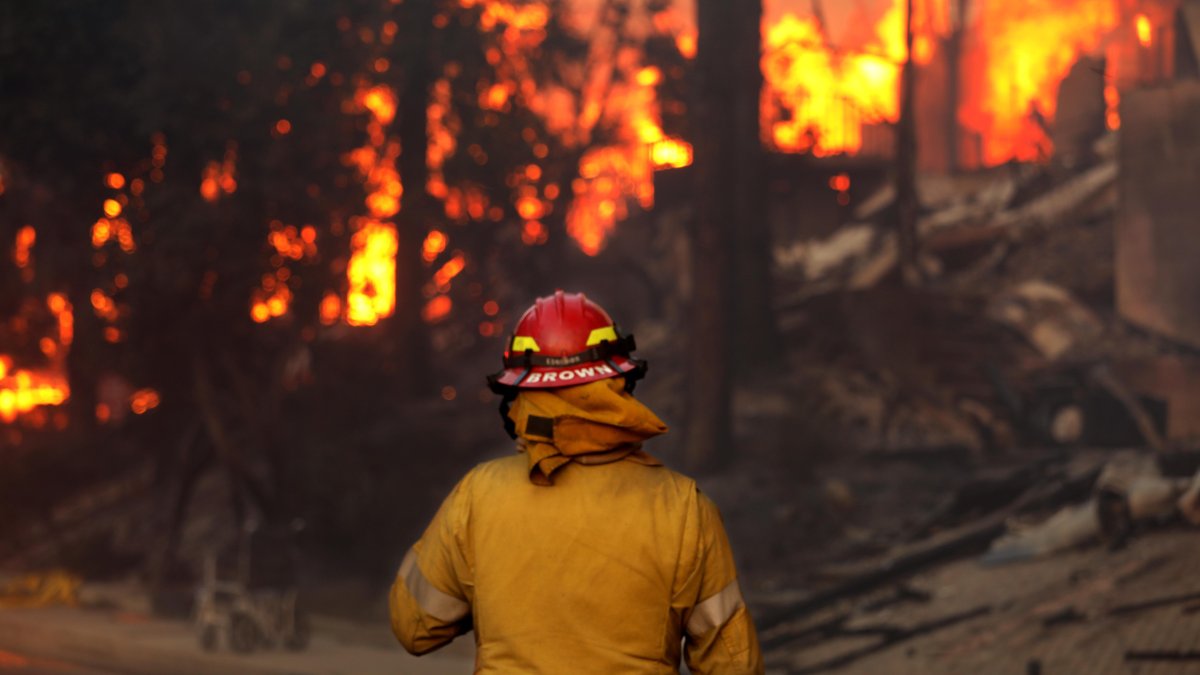What to Know
- A 29-year-old Florida man and former Pacific Palisades resident is charged with starting a New Year’s Day fire that became the deadly Palisades Fire Jan. 7.
- Jonathan Rinderknecht was arrested Tuesday in Florida and charged by federal prosecutors with destruction of property by means of fire.
- The New Year’s Day fire smoldered for days in the dense root structure in the LA County coastal community and was fanned by a Jan. 7 windstorm, authorities say.
- The suspect was in the Pacific Palisades area on the night of Dec. 31 after working as an Uber driver and dropping off a passenger in the neighborhood, prosecutors say.
- Witness statements, a ChatGPT profile, video surveillance, cellphone data, and an analysis of fire dynamics and patterns at the scene were part of the investigation.
- The Palisades Fire expanded to 23,400 acres before in was contained Jan. 31. Twelve people were killed and more than 6,800 structures, including residences and businesses, were destroyed.
More details about the start of one of Los Angeles County’s deadliest and most destructive wildfires on record emerged Wednesday when authorities announced an arrest in the January Palisades Fire.
Jonathan Rinderknecht, 29, was arrested Tuesday in Florida, nine months after the start of the fire in the Los Angeles County coastal community. The Palisades Fire expanded to 23,400 acres before it was contained Jan. 31. Twelve people were killed and more than 6,800 structures, including residences and businesses, were destroyed.
At a news conference Wednesday, federal authorities provided more details about the start of a smaller fire in the early hours of New Year’s Day that smoldered underground in the roots system of thick brush and later exploded in a Santa Ana windstorm to become the Palisades Fire. Authorities also detailed what led to the suspect’s arrest and a federal charge of destruction of property by means of fire.
The following timeline of events was compiled based on information provided by the U.S. Attorney’s Office, Cal Fire and LAFD records and NBCLA reports.
Dec. 31, 2024: An Uber drop-off in Pacific Palisades
On the night of New Year’s Eve, Rinderknecht was working as an Uber driver. He drove two passengers on separate trips between 10:15 p.m. and 11:15 p.m., according to the U.S. Attorney’s Office. Later, the passengers told law enforcement investigators that Rinderknecht appeared agitated and angry, prosecutors said.
One of the passengers was dropped off in Pacific Palisades, where Rinderknecht lived before a move to Florida.
In a statement, Uber said Rinderknecht was not on the company’s app at the time of the fire, but the company worked with investigators to help determine his location by providing information that included GPS data. His access to the Uber platform was removed after the company learned of a connection to the fire, the statement added.

DOJ/Getty
DOJ/Getty
Jonathan Rindernecht, 29, is pictured.
Jan. 1, 2025: New Year’s Day morning fire
After dropping off the passenger, Rinderknecht parked near the Skull Rock Trailhead and walked up a trail, investigators said. He took videos at a nearby hilltop and listened to a rap song — one he played repeatedly in the days before New Year’s Day — that included video of items being lit on fire, U.S. Attorney Bill Essayli said.
About 12 minutes after midnight, environmental sensing platforms indicated a fire in the Palisades area that was dubbed the Lachman Fire. During the next five minutes, investigators said Rinderknecht called 911 several times, but failed to connect because he was out of cellphone range. He finally reached 911 dispatch from the bottom of the hiking trail, but another resident had already reported the fire by that time.
Rinderknecht was driving away when he passed fire engines heading in the opposite direction and turned around to follow firefighters, prosecutors said. He walked up the same trail he visited earlier that night and, just after 1 a.m., recorded video of the scene, authorities said.
In a Jan. 24 interview with investigators, Rinderknecht said he was near the bottom of the hiking trail when he first saw the Lachman Fire and called 911. Geolocation data from his phone indicated he was in a clearing 30 feet from the fire, prosecutors said.
The Lachman Fire was suppressed early New Year’s Day, but continued to smolder underground.
A 29-year-old man arrested in Florida is charged with starting a New Year’s Day fire that eventually became the deadly Palisades Fire, authorities say. This video was broadcast on the NBC4 News at 9 a.m. on Oct. 8, 2025.
Jan. 7: Santa Ana winds whip Palisades Fire
On the morning of Jan. 7, a powerful Santa Ana windstorm that forecasters had warned of for days developed in Southern California. The winds re-ignited the smoldering New Year’s Day fire, investigators said.
The Palisades Fire is considered a “holdover” fire, a continuation of an earlier fire. In another high-profile case of fire that re-ignited, a 1991 fire in the Oakland Hills was thought to be extinguished, but embers continued to smolder under dense brush and the fire resurfaced in strong winds the next day to become one of the deadliest fires on record in California, resulting in 25 deaths and hundreds of destroyed structures.
ATF experts had been working to evaluate the possibility that embers or material not fully extinguished from the New Year’s fire could have reignited a week later. The findings from those tests have not previously been made public.
In the hours and days that followed the start of the Palisades Fire, terrifying flames ripped through communities along the Los Angeles County coast, burning homes and businesses. Firefighters raced to contain flames as other fires broke out and spread, including the deadly Eaton Fire in Altadena on the night of Jan. 7. Widespread evacuations were ordered.
The Palisades Fire was contained Jan. 31. It is the ninth-deadliest wildfire on record in California and the third-most destructive.
Oct. 8: Arrest announced in Palisades Fire
After months of investigations with the recovery and rebuilding process still ongoing, federal authorities announced the arrest of Rinderknecht. He was arrested a day earlier in Florida.
Essayli said Rinderknecht was arrested based on digital evidence, including a ChatGPT profile that authorities said displayed a fire burning and people fleeing from the flames in what appeared to be an urban setting. The image, which also featured burning structures, was produced a few months before the fire, Essayli said.
Witness statements, video surveillance, cellphone data, and an analysis of fire dynamics and patterns at the scene also were part of the investigation.
Rinderknecht made an initial court appearance Oct. 8.
